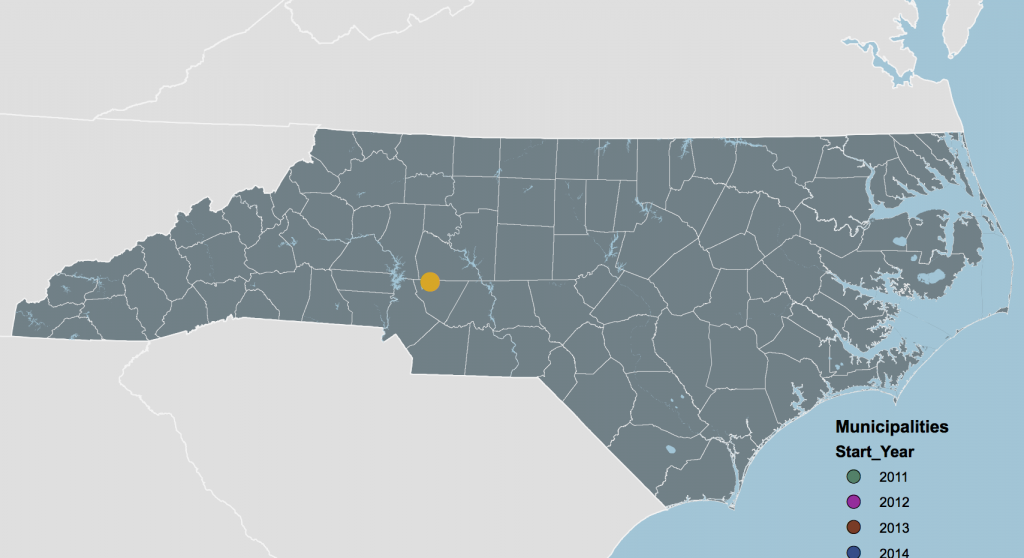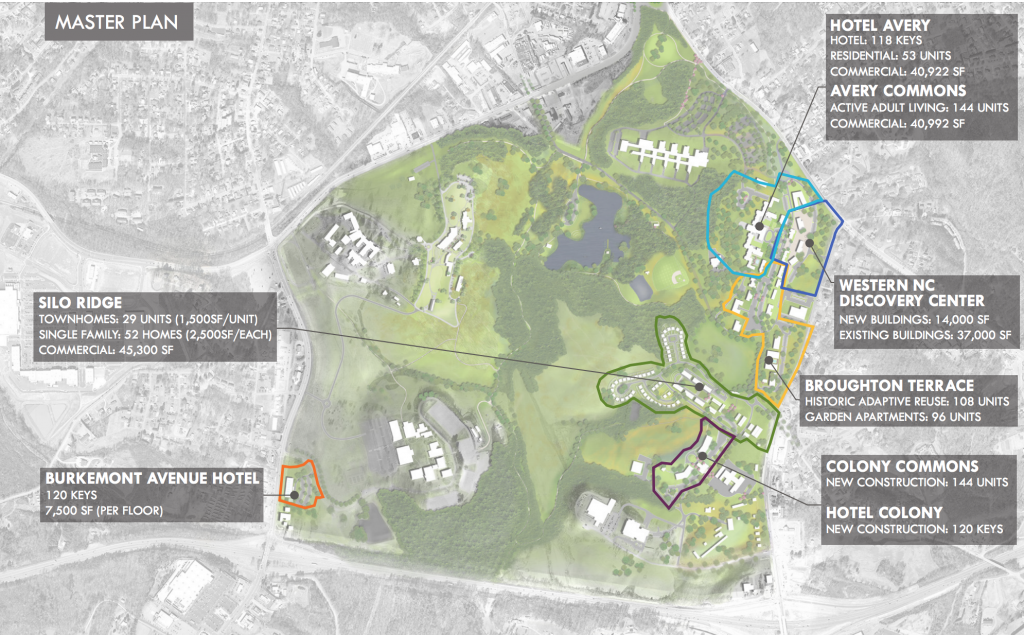A Long-Term, Large-Scale Vision (Kannapolis, NC)
A community wanting to transform its downtown could focus on singular projects, but UNC DFI analysis often reveals that a greater scale of redevelopment can enhance feasibility and achieve more impact. If an entire city block is vacant, the redevelopment of one building will not make a huge difference. Large-scale efforts will sometimes help mitigate the costs of development and allow for a shared vision and coordinated investment among public and private sectors—all factors that can enhance the likelihood of a successful and sustainable revitalization effort.
The Challenge
Kannapolis, North Carolina, exemplifies the scaled-up approach. In 2015, the City of Kannapolis acquired its entire historic downtown core for $8.75 million. The purchase included numerous historic buildings and large swaths of vacant land where mill structures once stood.
Much of Kannapolis’s downtown had been built and run for employees of Cannon Mills, the city’s namesake and once the largest textile factory in the world. In 2003, the mill closed and the 4,300 jobs that were lost marked the biggest permanent layoff in North Carolina history. The downtown, as well as the mill, had been acquired from Cannon Mills in 1982 by billionaire and Dole Food mogul David Murdock, who sold the mill in 1987 but held onto the downtown and surrounding acreage. Having a single owner of the area helped to facilitate the sizeable transaction between the City of Kannapolis and Murdock.
In 2015, more than half of the downtown was vacant and many of its historic structures were in states of disrepair. Few vestiges of Kannapolis’s formerly bustling downtown, where three movie theaters once played the newest films in sync with mill workers’ shifts, remained. Although the tax assessed value of downtown totaled $24.5 million, it represented less than 1% of the city’s total tax base.
With the downtown under local government ownership and a 10-year partnership with UNC DFI in place, city leadership regained control over the fate of arguably its most unique asset.
The Project
Since 2015, Kannapolis—with the help of DFI—has made major investments in its downtown, radically transforming its infrastructure, providing more greenspace, and refocusing on pedestrian-centered designs. The downtown’s primary street, for example, is being transformed into an urban, linear park. Its innovative design will tie into surrounding commercial and community spaces, providing outdoor seating and recreational opportunities.
The construction of a new baseball stadium with expected opening in Spring 2020 complements the city’s vision. Known as the Sports and Entertainment Venue, or “SEV” for short, the new stadium will host 70 baseball games annually, seating roughly 5,400 people, while also providing a venue for outdoor concerts and events.
These strategic and innovative investments signal the City’s commitment to revitalizing its downtown, and though not yet complete as of Summer 2019, they have already begun to usher in new private investment.
Through DFI’s help in master planning, Kannapolis is beginning to transfer its downtown land holdings to private parties for redevelopment. A mix of residential, office, retail, and hospitality uses are planned, which—once implemented through a series of solicitations and Public Private Partnerships (P3s)—will breathe new life into this once-vibrant downtown.
As each property is turned over to private partners, UNC DFI conducts detailed predevelopment analyses to better inform the appropriate development program as well as the appropriate level of public investment. And as a long-term partner, DFI will remain by the City’s side throughout its downtown’s redevelopment. By continuing to provide updated financial, market, and site analyses, UNC DFI protects the City’s potential financial liability, limits public investment, and upholds the public interest.
Ultimately, as Kannapolis works to reposition itself, DFI provides resources that expand the capacities of City staff and elected officials and inform better decision-making.
The Outcome
In 2016, the City and DFI released the downtown’s first solicitation for private development. Known as the Demonstration Project, this mixed-use development opportunity served to showcase the market’s appetite and development potential of downtown Kannapolis. With UNC DFI’s help, the City successfully negotiated and executed a development agreement with an experienced partner and the project broken ground March 2019. Known as VIDA, the development will add 286 apartments, 19,000 square feet of commercial space, and 417 structured parking spaces to downtown.
Since the success of the demonstration project, UNC DFI has released additional solicitations for townhouses to be constructed at the former mill site and the adaptive reuse of several historic downtown buildings. The City and DFI will continue to release solicitations to realize the City’s goals of seeing more than $400M of investment in downtown Kannapolis.







